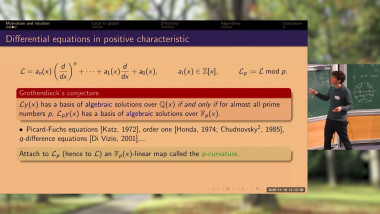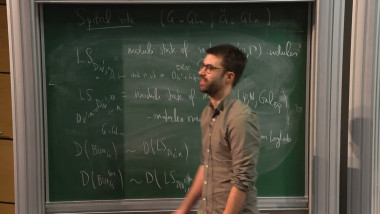
An Effective Proof of the p-curvature Conjecture for First-order Differential Equations With Rational Coefficients
De Lucas Pannier

Geometric Aspects of the $p$-adic Locally Analytic Langlands Correspondence IV
De Arthur-César Le Bras
De Zeév Rudnick
Apparaît dans les collections : Prime numbers and automatic sequences: determinism and randomness / Nombres premiers et suites automatiques : aléa et déterminisme, Exposés de recherche
Fermat showed that every prime $p = 1$ mod $4$ is a sum of two squares: $p = a^2 + b^2$, and hence such a prime gives rise to an angle whose tangent is the ratio $b/a$. Hecke showed, in 1919, that these angles are uniformly distributed, and uniform distribution in somewhat short arcs was given in by Kubilius in 1950 and refined since then. I will discuss the statistics of these angles on fine scales and present a conjecture, motivated by a random matrix model and by function field considerations.
